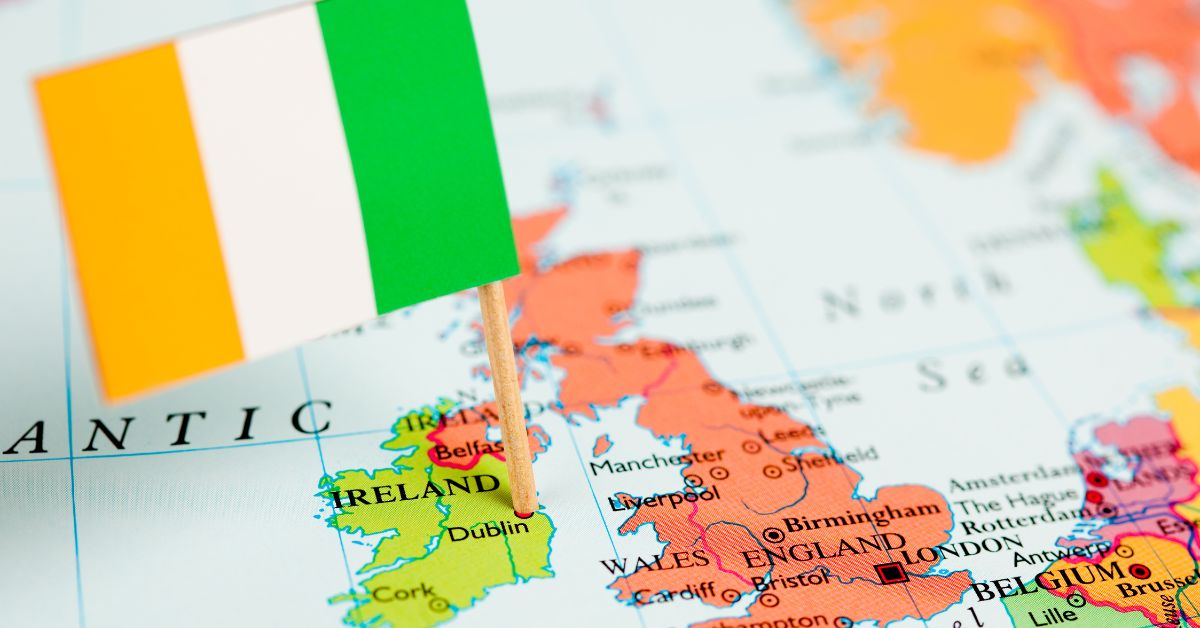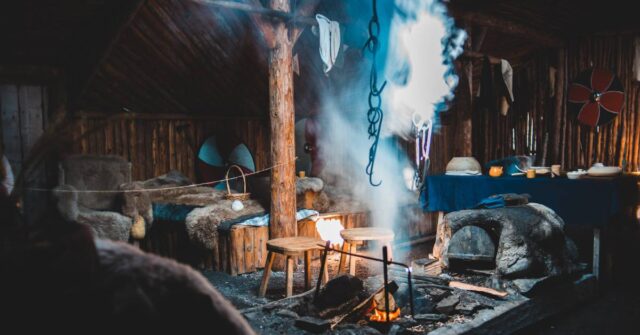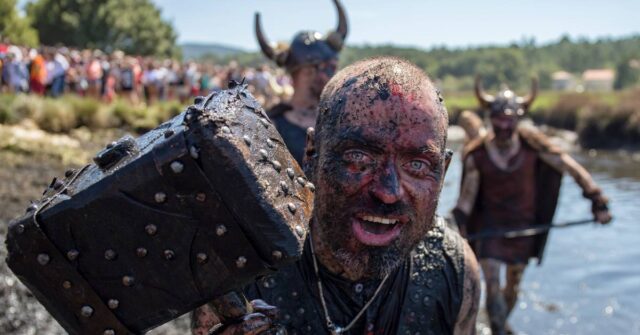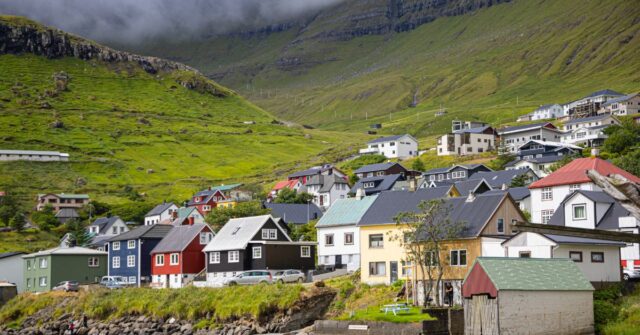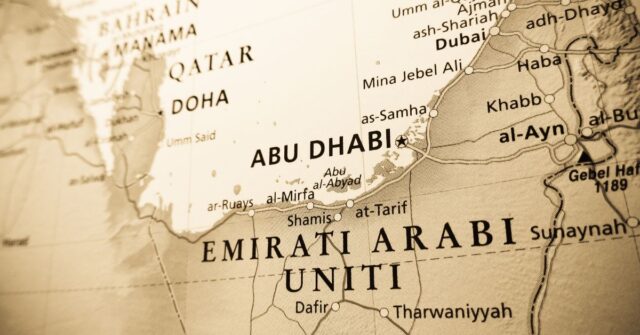The Vikings, famed for their seafaring and martial skills, left an indelible mark on Ireland from the late 8th to the 11th century.
Their arrival, settlement, and integration significantly influenced Ireland’s economic, cultural, and political landscapes.
This post delves into the various aspects of Viking influence and integration in Ireland.
Introduction
The Viking era in Ireland began with initial raids and evolved into deep societal integration.
Their presence profoundly impacted various facets of Irish life, from trade and economy to culture and politics.
This exploration aims to provide a comprehensive understanding of the Viking legacy in Ireland.
The Arrival of the Vikings in Ireland
The Vikings first arrived in Ireland in 795 AD, initiating a period of significant upheaval and change.
Their initial encounters with the Irish were marked by swift and brutal raids on monasteries and settlements.
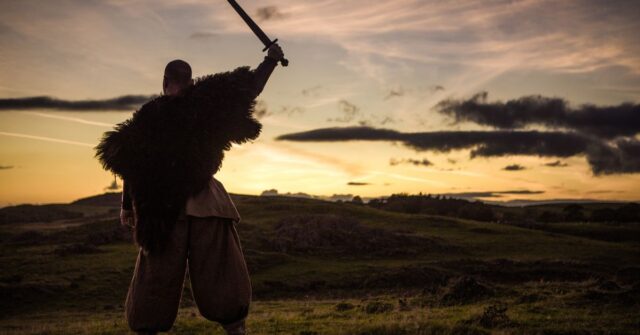

First Raids and Initial Reactions
The first recorded Viking raid in Ireland took place on the island of Lambay near Dublin in 795 AD. Monasteries were prime targets due to their wealth and lack of defenses.
The initial reactions to these raids were of shock and horror, with contemporary chronicles like the Annals of Ulster vividly describing the violence and destruction brought by these foreign invaders.
Transition from Raiders to Settlers
By the mid-9th century, the Vikings began to establish permanent settlements in Ireland. This marked a shift from mere raiding to more sustained occupations.
Key settlements such as Dublin, Waterford, Cork, Limerick, and Wexford emerged, serving as bases for further expeditions and developing into vital centers of trade and commerce.
Establishment of Viking Settlements
The establishment of Viking settlements marked a significant phase in their integration into Irish society. These towns not only served as military bases but also as thriving trade hubs.
Founding of Major Viking Towns
The Vikings established several important towns in Ireland, each playing a crucial role in the regional economy and politics.
Dublin: From Longphort to Trading Hub
Dublin began as a Viking longphort, a fortified encampment used for both military and trading purposes.
Over time, it grew into a bustling town, becoming a central hub for trade between Ireland and the broader Viking world.
Dublin’s strategic location along the River Liffey made it an ideal spot for trade, with goods flowing in and out from various parts of Europe and beyond.
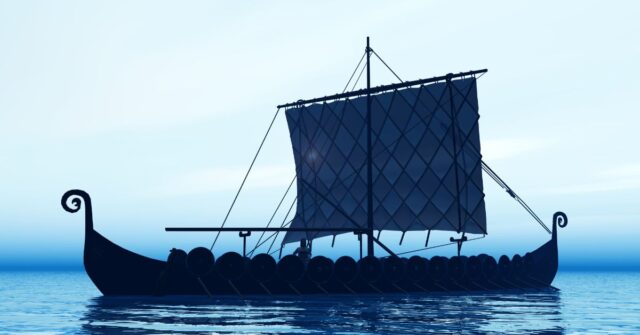

Waterford, Cork, Limerick, and Wexford
In addition to Dublin, the Vikings established other key settlements that played significant roles in regional trade and politics. Waterford, founded in 914 AD, quickly became an important port.
Cork, Limerick, and Wexford also grew into vital trade centers, each contributing to the economic and social integration of the Vikings and the Irish.
Economic Impact of the Vikings
The Vikings had a profound impact on the Irish economy, transforming trade networks and introducing new economic practices.
Transformation of Trade Networks
Through their settlements, the Vikings connected Ireland to broader European and Scandinavian trade networks, facilitating economic growth and diversification.
Trade Goods and Commerce
The Vikings revolutionized trade in Ireland by connecting it to broader European and Scandinavian networks.
Dublin, in particular, emerged as a major trading hub, dealing in slaves, cattle, textiles, and precious metals.
This influx of goods and wealth had a profound impact on the Irish economy, introducing new products and fostering economic growth.
Introduction of Coinage and Exotic Items
The Vikings introduced coinage to Ireland, facilitating more sophisticated economic transactions.
They also brought exotic goods such as silks and wines, which were previously unknown to the Irish.
This not only expanded the variety of available goods but also exposed the Irish to new cultural influences.
Cultural Exchange and Integration
The Vikings’ presence in Ireland led to significant cultural exchanges and integration, influencing language, art, and religious practices.
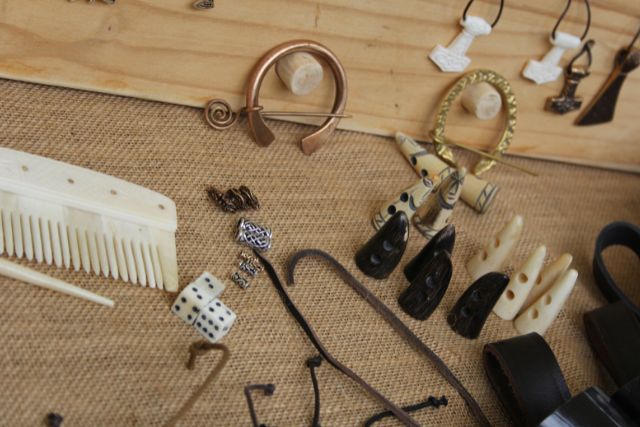

Intermarriage and the Hiberno-Norse Community
Intermarriage between Vikings and the Irish created a unique Hiberno-Norse community, blending customs and traditions from both cultures.
Matrimonial Alliances
Intermarriage between the Vikings and the Irish became common, especially among the elite.
These matrimonial alliances helped to cement political and economic relationships, leading to a blending of cultures and the creation of a new Hiberno-Norse identity.
Cultural Blending in Daily Life
The Hiberno-Norse community that emerged from these unions played a key role in bridging the cultural gap between the Vikings and the Irish.
Daily life saw a blend of customs, traditions, and practices from both cultures, enriching the social fabric of Irish society.
Language and Literature
The interaction between the Vikings and the Irish had a significant impact on the Irish language and literature.
Influence of Old Norse on Old Irish
The interaction between the Vikings and the Irish had a significant impact on the Irish language.
Old Norse introduced new words and concepts into Old Irish, particularly in areas related to trade, warfare, and navigation.
Place names and personal names also reflect this linguistic influence.
Integration in Sagas and Legends
The cultural exchange extended to literature, with Norse sagas and Irish legends often intertwining.
These stories, passed down through generations, reflect the shared heritage and mutual influence of the two cultures.
Art and Craftsmanship
The Vikings brought with them distinct styles of art and craftsmanship, particularly in metalwork and jewelry.
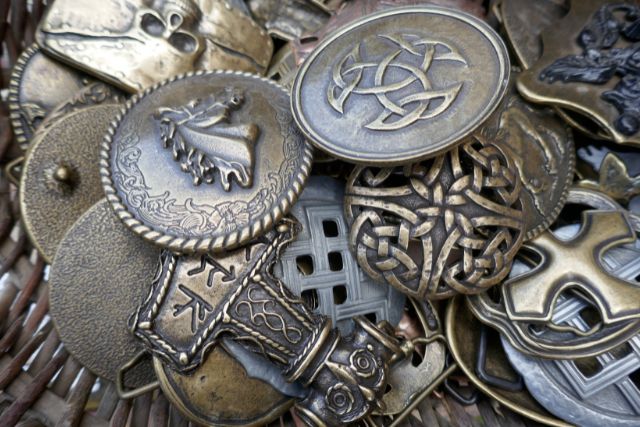

Hiberno-Norse Metalwork and Jewelry
The Vikings brought with them distinct styles of art and craftsmanship, particularly in metalwork and jewelry.
The Hiberno-Norse style that developed in Ireland combined traditional Celtic motifs with Viking designs, resulting in intricate and unique pieces that are still admired today.
Architectural Contributions
Viking architecture, particularly in the construction of fortified settlements and longhouses, influenced Irish building practices.
The use of stone and timber in Viking structures provided models for similar constructions in Ireland.
Religion and Spirituality
Religion played a central role in the Viking integration into Irish society, marked by a blend of Norse and Christian beliefs.
Conversion to Christianity
While the Vikings initially brought their pagan beliefs to Ireland, over time many converted to Christianity.
This religious shift was facilitated by their interactions with the Irish and the strategic advantages of aligning with the dominant religion of the region.
Syncretism of Norse and Christian Beliefs
The conversion to Christianity did not completely erase Norse religious practices. Instead, a syncretic blend emerged, where Norse gods and Christian symbols coexisted.
This unique religious fusion is evident in various archaeological findings and religious artifacts.
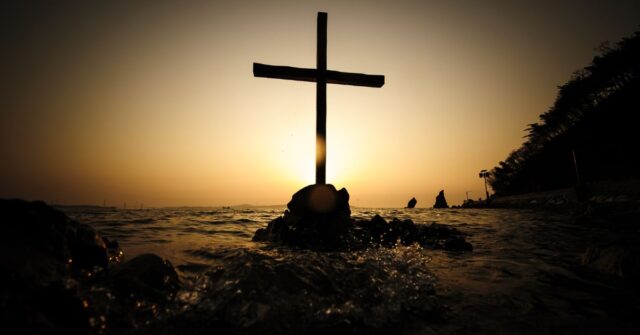

Political Dynamics
The political landscape of Ireland during the Viking era was complex, with Viking leaders integrating into the existing Irish political system.
Viking Kings and Irish Lords
Viking chieftains established themselves as rulers in various parts of Ireland, often adopting the title of king.
They had to navigate the complex Irish political landscape, which consisted of numerous small kingdoms.
These Viking rulers played significant roles in regional politics, forging alliances and waging wars.
Establishment of Viking Rule
Viking chieftains established themselves as rulers in various parts of Ireland, often adopting the title of king.
They had to navigate the complex Irish political landscape, which consisted of numerous small kingdoms.
These Viking rulers played significant roles in regional politics, forging alliances and waging wars.
Alliances and Conflicts
Relationships between the Vikings and Irish lords were characterized by both cooperation and conflict.
Alliances were often formed through marriage or mutual interests, but clashes over territory and power were frequent.
The Battle of Clontarf in 1014 is one of the most famous conflicts, marking a significant turning point in Viking-Irish relations.
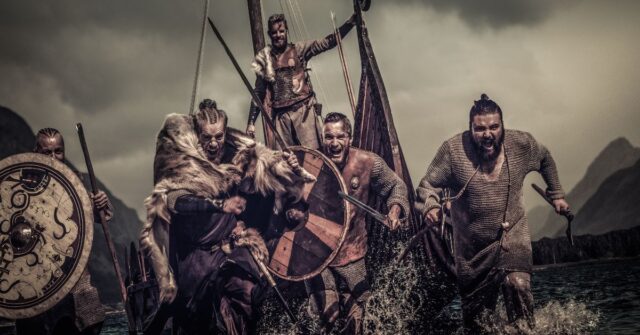

Major Battles and Their Outcomes
Several major battles between the Vikings and the Irish shaped the course of history, with long-lasting implications for both sides.
The Battle of Clontarf
The Battle of Clontarf, fought on April 23, 1014, is one of the most well-known battles involving the Vikings in Ireland.
High King Brian Boru led the Irish forces against a coalition of Viking and Irish enemies.
Although Brian Boru was killed, his forces won the battle, effectively ending Viking political dominance in Ireland.
Other Key Battles and Their Significance
Besides Clontarf, several other battles shaped Viking-Irish history.
The Battle of Tara in 980, for example, saw the Irish king Mael Sechnaill mac Domnaill defeat the Vikings, freeing Irish territories from tribute.
These conflicts illustrate the turbulent and dynamic nature of Viking-Irish interactions.
Technological and Societal Contributions
The Vikings brought advanced technologies and societal practices to Ireland, influencing various aspects of Irish life and contributing to its development.
Shipbuilding and Navigation
The Vikings were renowned for their shipbuilding skills, creating vessels that were fast, durable, and capable of long sea voyages.
These designs influenced Irish shipbuilding, leading to the adoption of more advanced maritime technology.
The introduction of Viking ships and navigational techniques had a lasting impact on Irish maritime practices.
Improved ship designs facilitated better fishing, trade, and exploration, enhancing Ireland’s connections with the wider world.
Urbanization and Town Planning
The Vikings are credited with founding some of Ireland’s first urban centers.
Towns like Dublin, Waterford, and Cork grew from small settlements into bustling urban areas, setting the foundation for future urbanization in Ireland.
The establishment of Viking towns influenced settlement patterns in Ireland, encouraging the development of more organized and structured communities.
This shift contributed to the growth of trade and the overall economic development of the region.
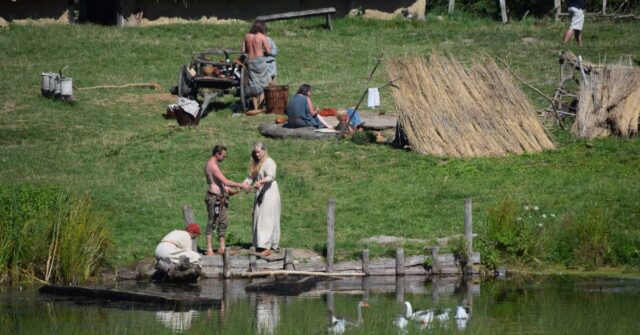

Legacy of the Vikings in Ireland
The legacy of the Vikings in Ireland is profound, with their influence still evident in modern times. Their contributions to Irish culture, economy, and politics have left a lasting imprint.
Archaeological Evidence
Archaeological excavations at sites like Wood Quay in Dublin have uncovered significant Viking artifacts, providing insights into their daily lives, trade practices, and interactions with the Irish.
These findings help to piece together a more complete picture of Viking life in Ireland and their integration into Irish society.
Key Excavations and Findings
Significant archaeological sites, such as Dublin’s Wood Quay, have yielded a wealth of Viking artifacts.
These include tools, weapons, jewelry, and everyday items that offer a glimpse into the Viking way of life.
Excavations in other Viking settlements, such as Waterford and Cork, have also provided valuable insights into the extent of Viking influence in Ireland.
Artifacts and Their Significance
Artifacts uncovered in Viking settlements include a range of items, from everyday household objects to intricate pieces of jewelry.
These artifacts reveal much about the daily lives, social structures, and cultural practices of the Vikings.
For example, the discovery of Viking weapons and tools indicates their advanced metallurgical skills, while jewelry and decorative items reflect their artistry and aesthetic sensibilities.
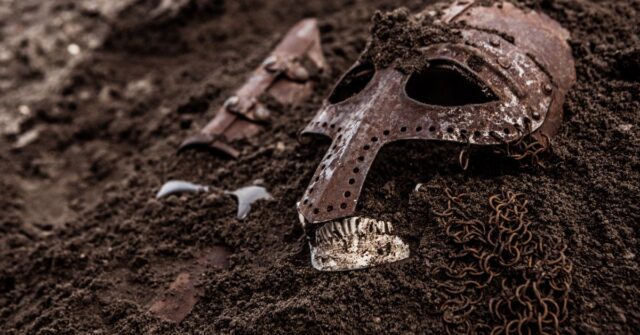

Genetic Influence
Recent genetic studies have revealed the lasting impact of Viking ancestry in modern Ireland.
These studies have identified genetic markers that indicate a significant Viking presence in the Irish gene pool, particularly in regions that were major Viking settlements.
Studies on Viking Ancestry in Modern Ireland
Genetic research has shown that many modern Irish people carry Viking genetic markers, indicating a significant level of integration and intermarriage between the Vikings and the Irish.
This genetic legacy is particularly strong in areas that were major Viking settlements, such as Dublin, Waterford, and Cork.
Impact on Irish Genealogy
The genetic influence of the Vikings is evident in the genealogical records of many Irish families.
Surnames such as Doyle, MacAuliffe, and MacManus have Viking origins, reflecting the deep-rooted connections between the Norse settlers and the native Irish.
This genetic legacy underscores the lasting impact of the Vikings on Irish society.
Modern Celebrations and Commemorations
Today, the Viking legacy in Ireland is celebrated through various festivals, re-enactments, and museums.
These events and institutions help to preserve and promote the rich history of the Viking presence in Ireland.
Festivals and Re-enactments
Festivals such as the Dublin Viking Festival and the Waterford Viking Festival celebrate the Viking heritage of these cities.
These events feature re-enactments of Viking battles, displays of Viking crafts and artifacts, and educational activities that bring the history of the Vikings to life for modern audiences.
Museums and Historical Sites
Museums such as Dublin’s National Museum of Ireland and Waterford’s Medieval Museum house extensive collections of Viking artifacts.
These institutions provide valuable educational resources, allowing visitors to explore the history and culture of the Vikings in Ireland.
Historical sites, such as the remains of Viking settlements and fortifications, offer tangible links to this fascinating period in Irish history.
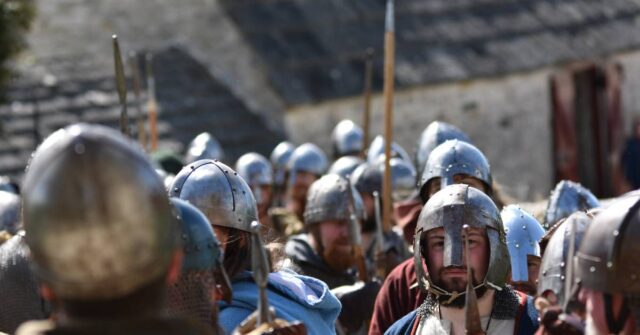

Conclusion
The Vikings left a profound legacy in Ireland, influencing its economy, culture, and politics in ways that are still evident today.
From their initial raids to their integration into Irish society, the Vikings played a crucial role in shaping the course of Irish history.
Their contributions to trade, art, and urban development, along with their genetic and cultural legacy, continue to be celebrated and studied, ensuring that the story of the Vikings in Ireland remains a vibrant and enduring part of the nation’s heritage.
Summary of Viking Influence
The Vikings transformed Ireland through their economic contributions, cultural exchanges, and political integration.
Their settlements became vital trade hubs, their art and craftsmanship enriched Irish culture, and their genetic legacy is still present in modern Irish populations.
The Enduring Legacy of Viking Integration
The integration of the Vikings into Irish society has left an indelible mark on the nation.
Their influence is celebrated through festivals, museums, and ongoing research, ensuring that the legacy of the Vikings in Ireland remains a dynamic and integral part of Irish history and identity.

